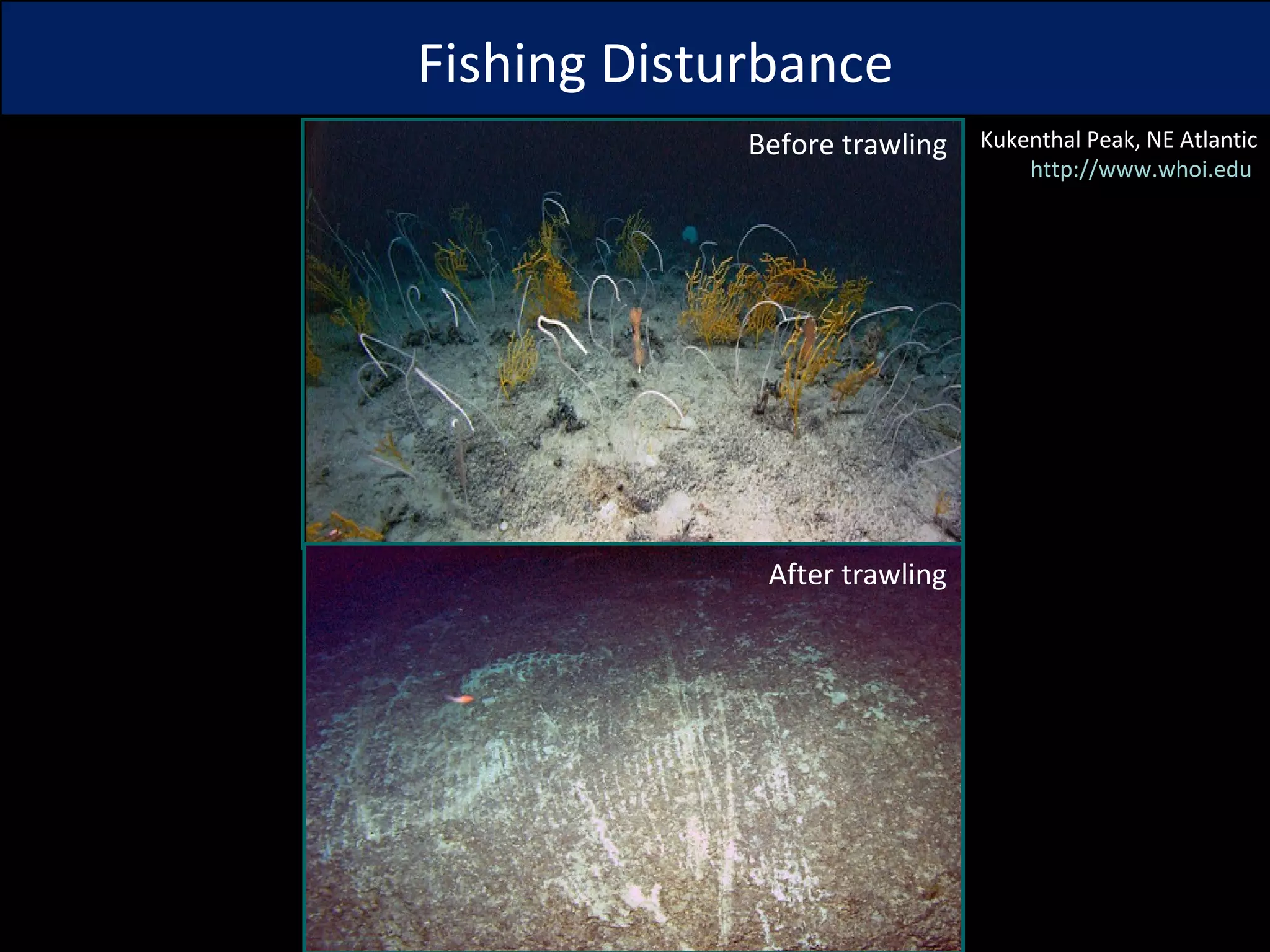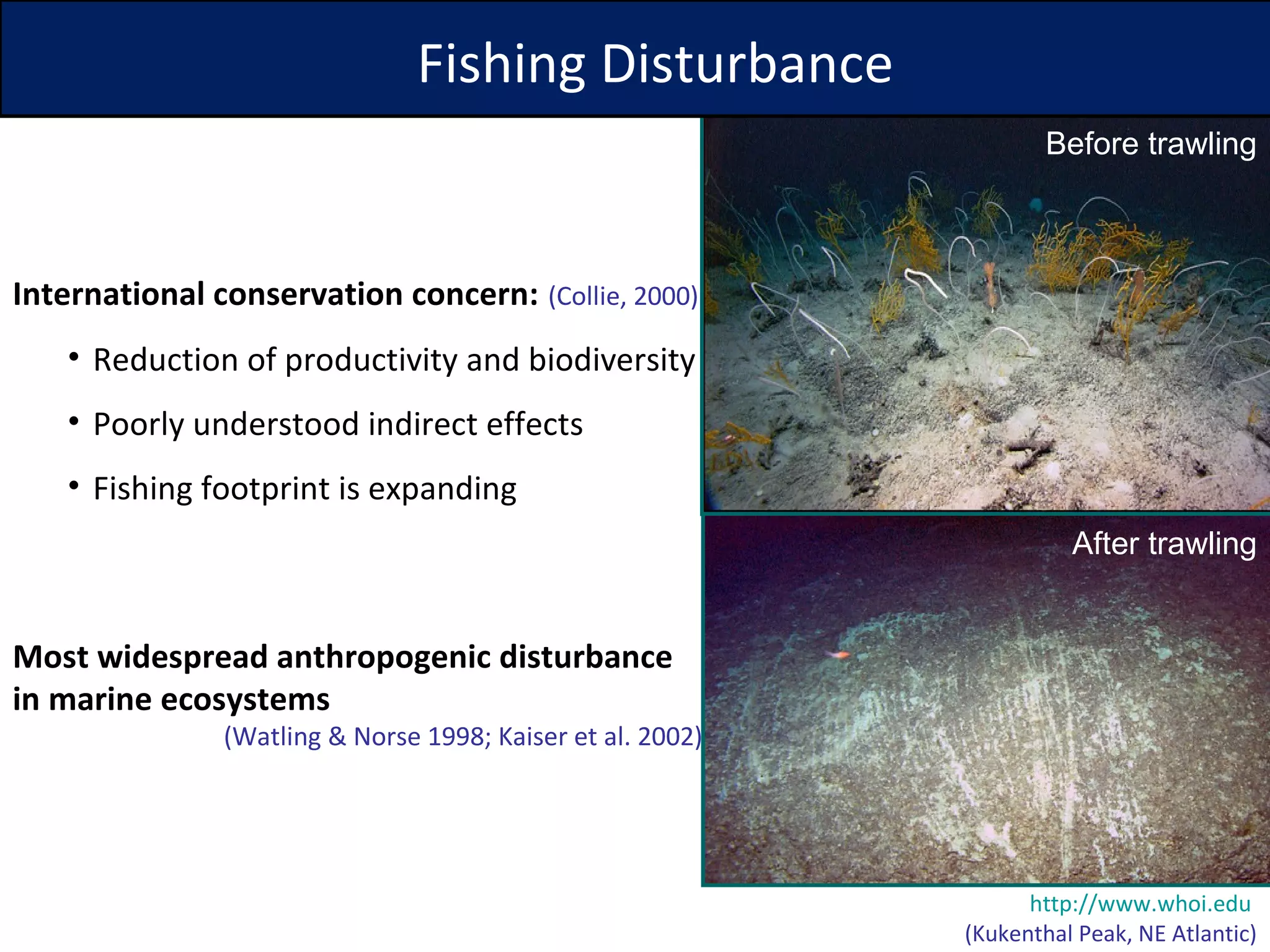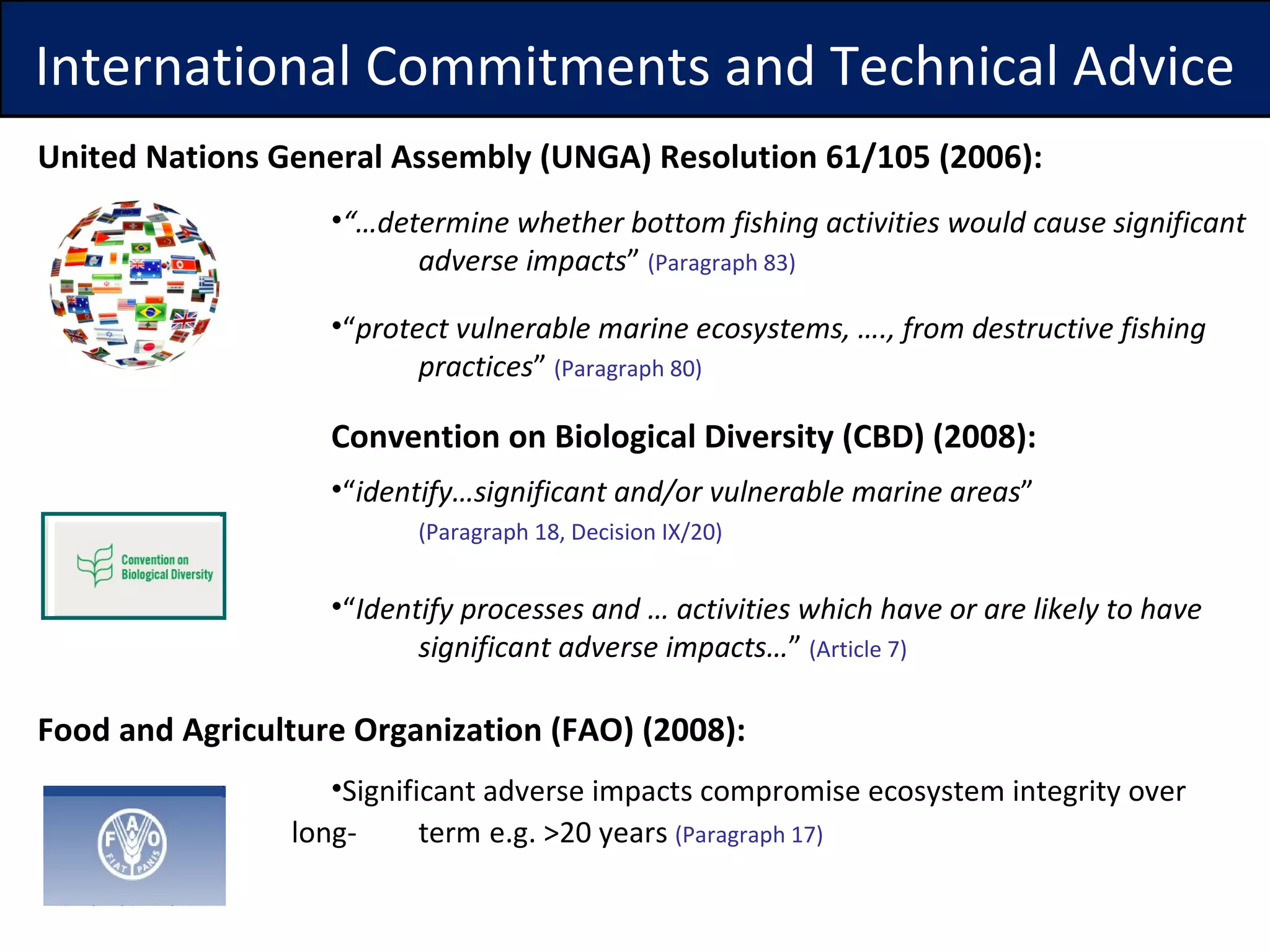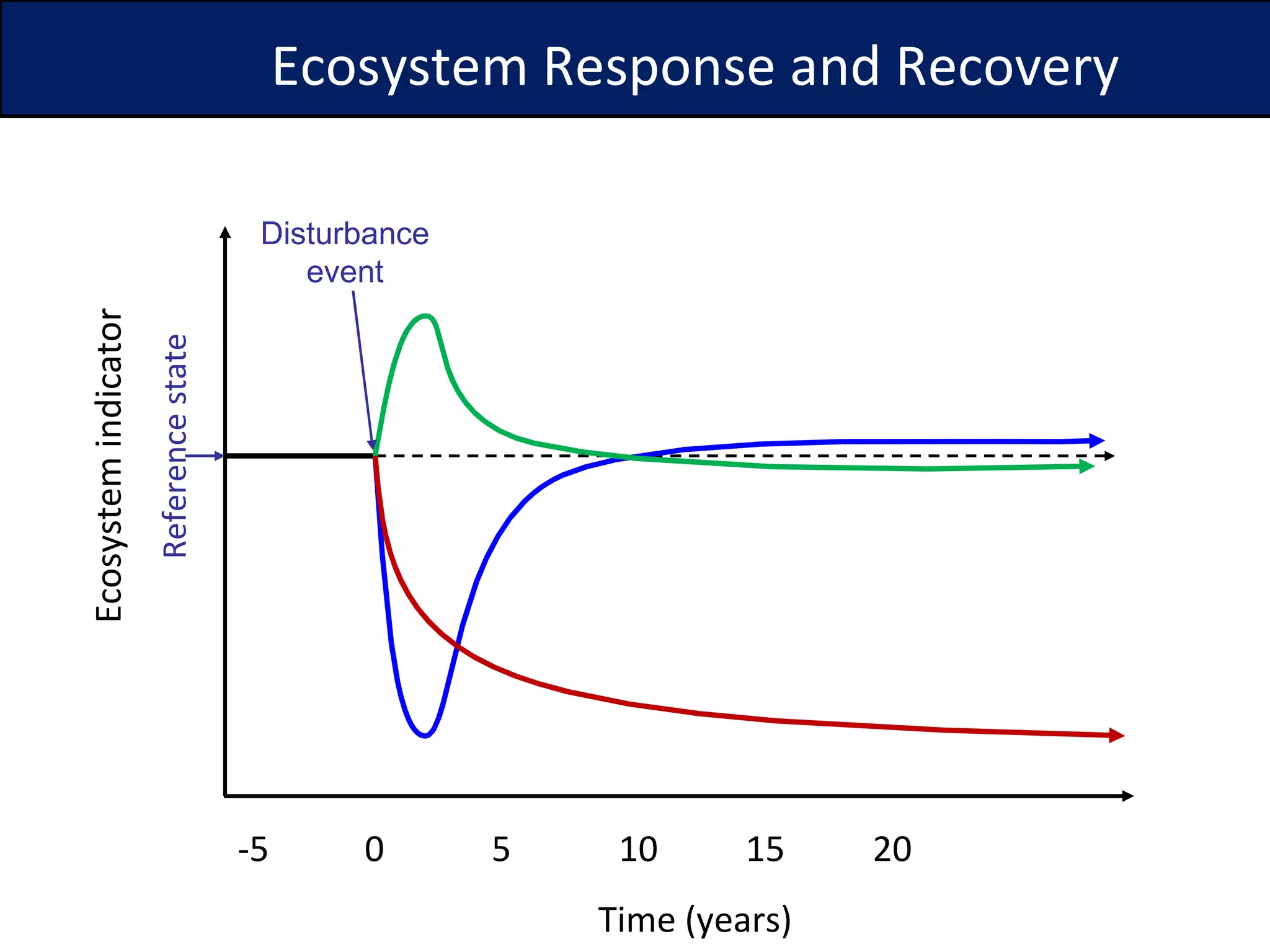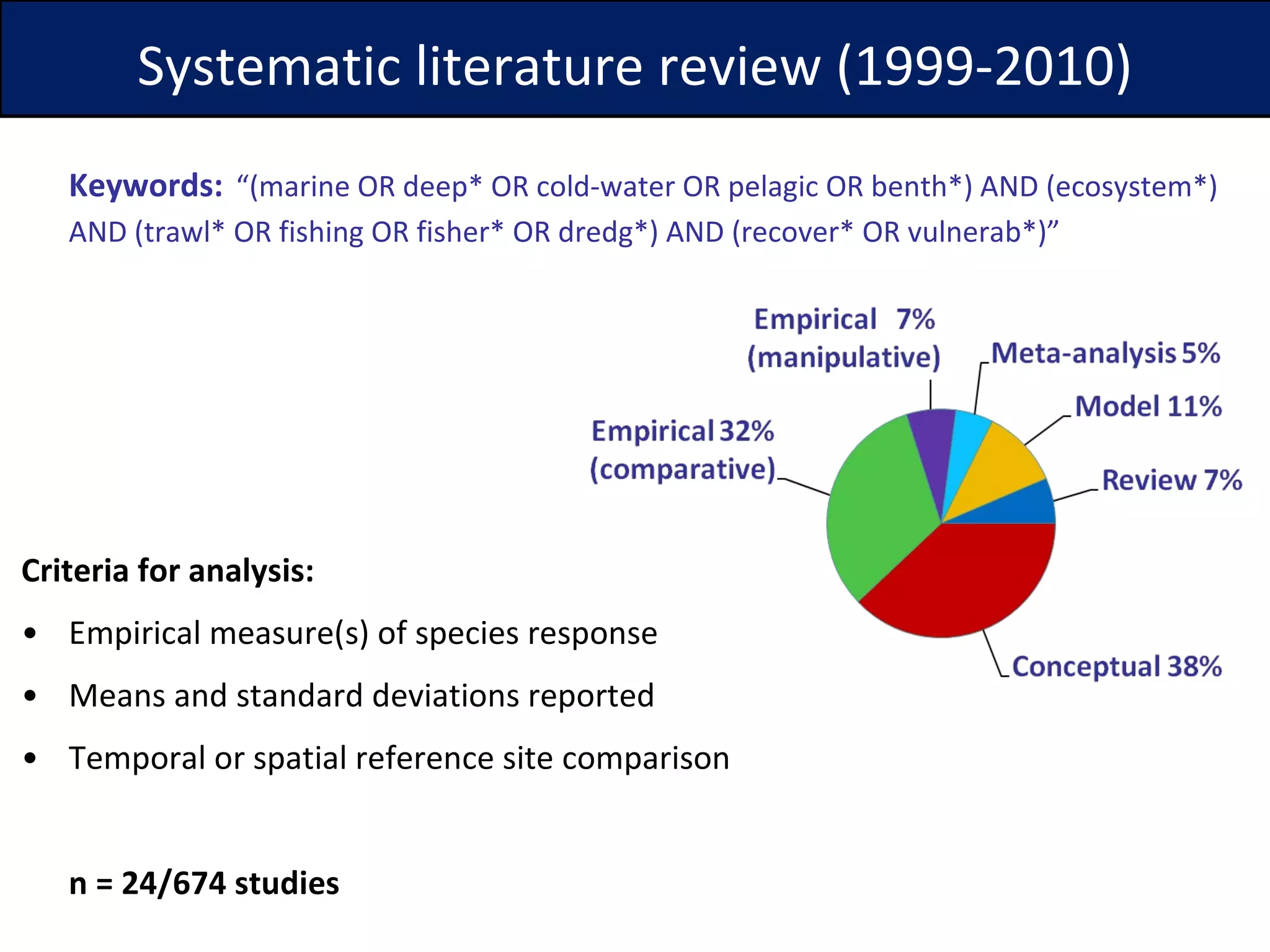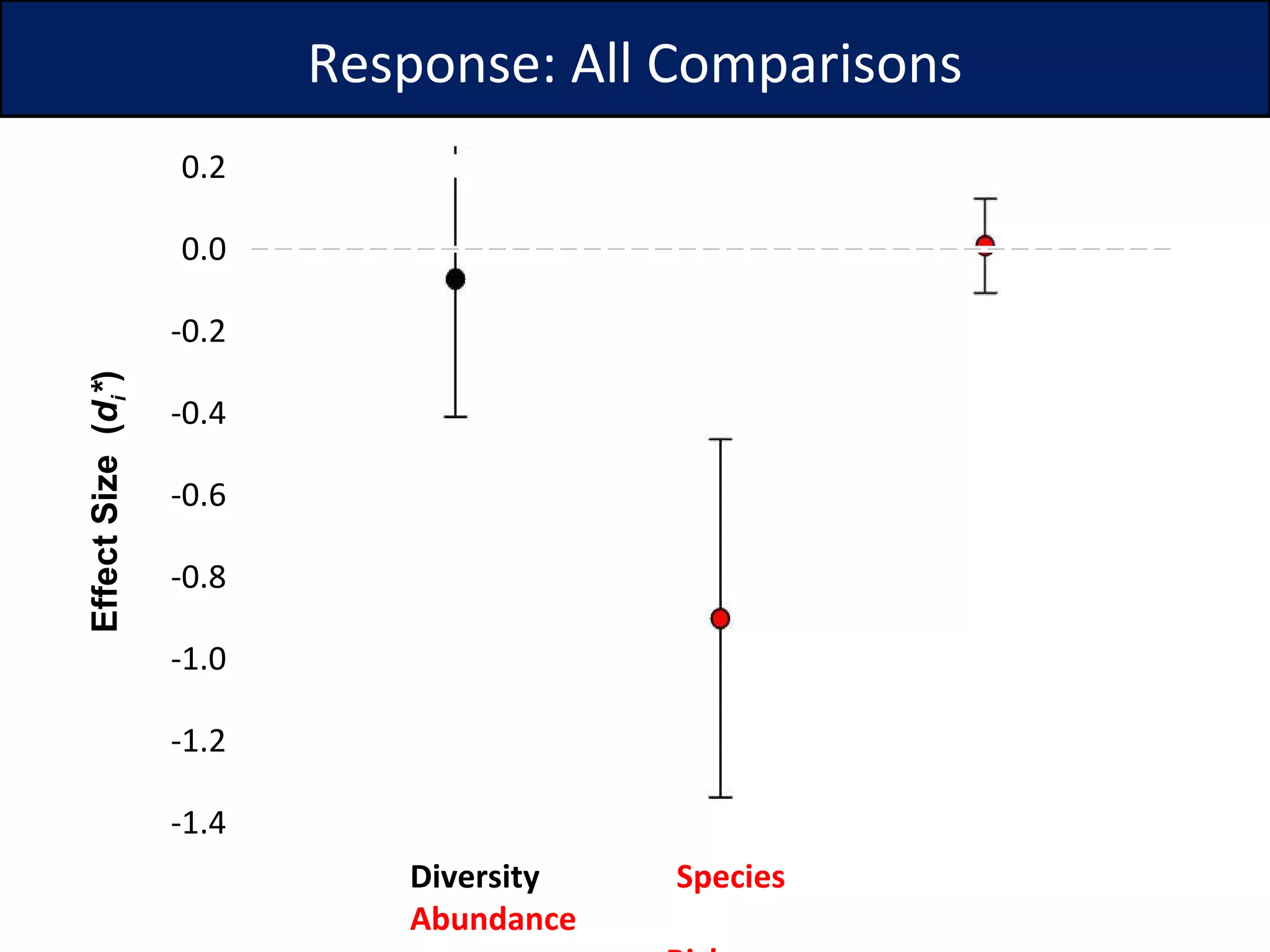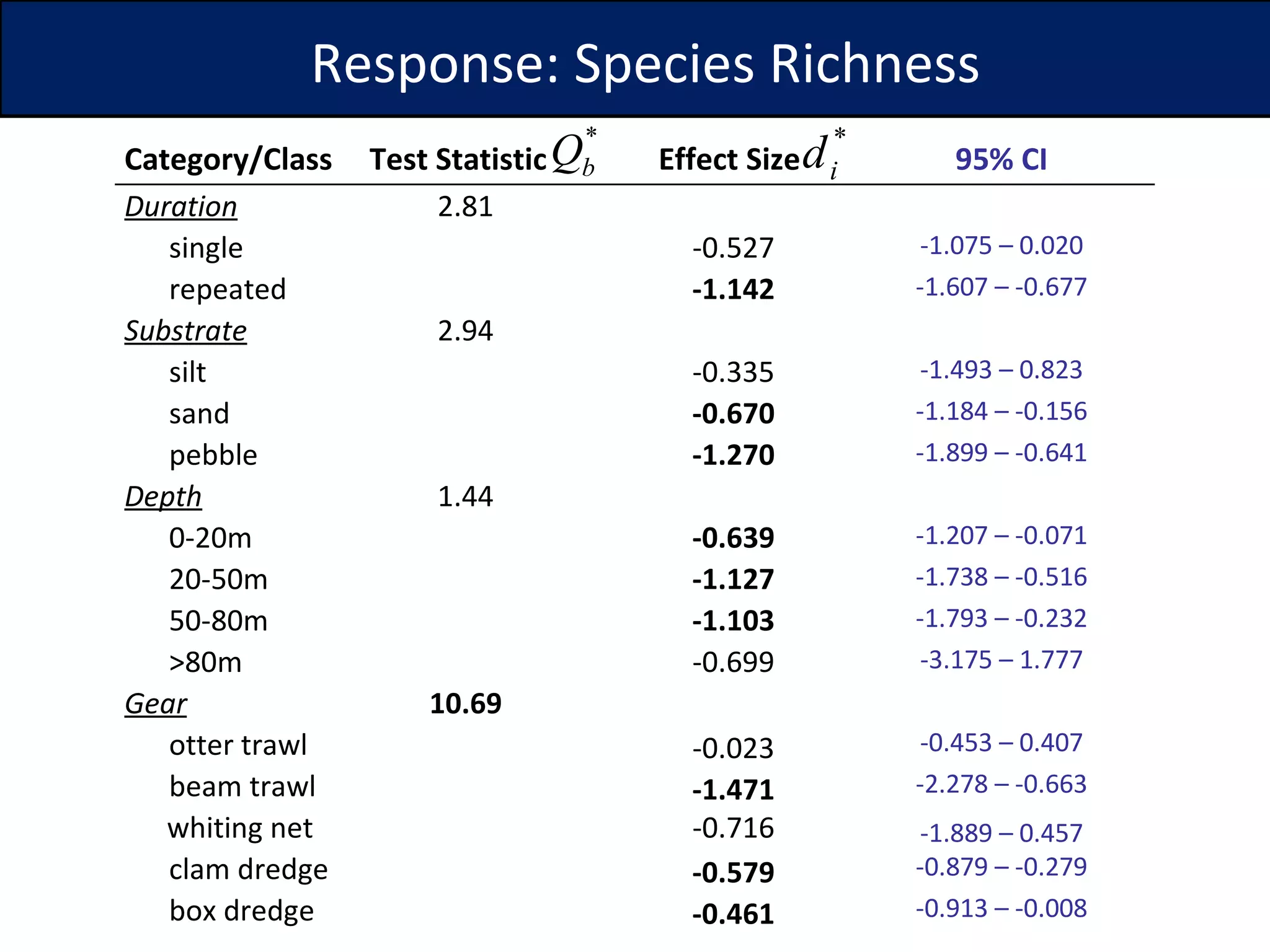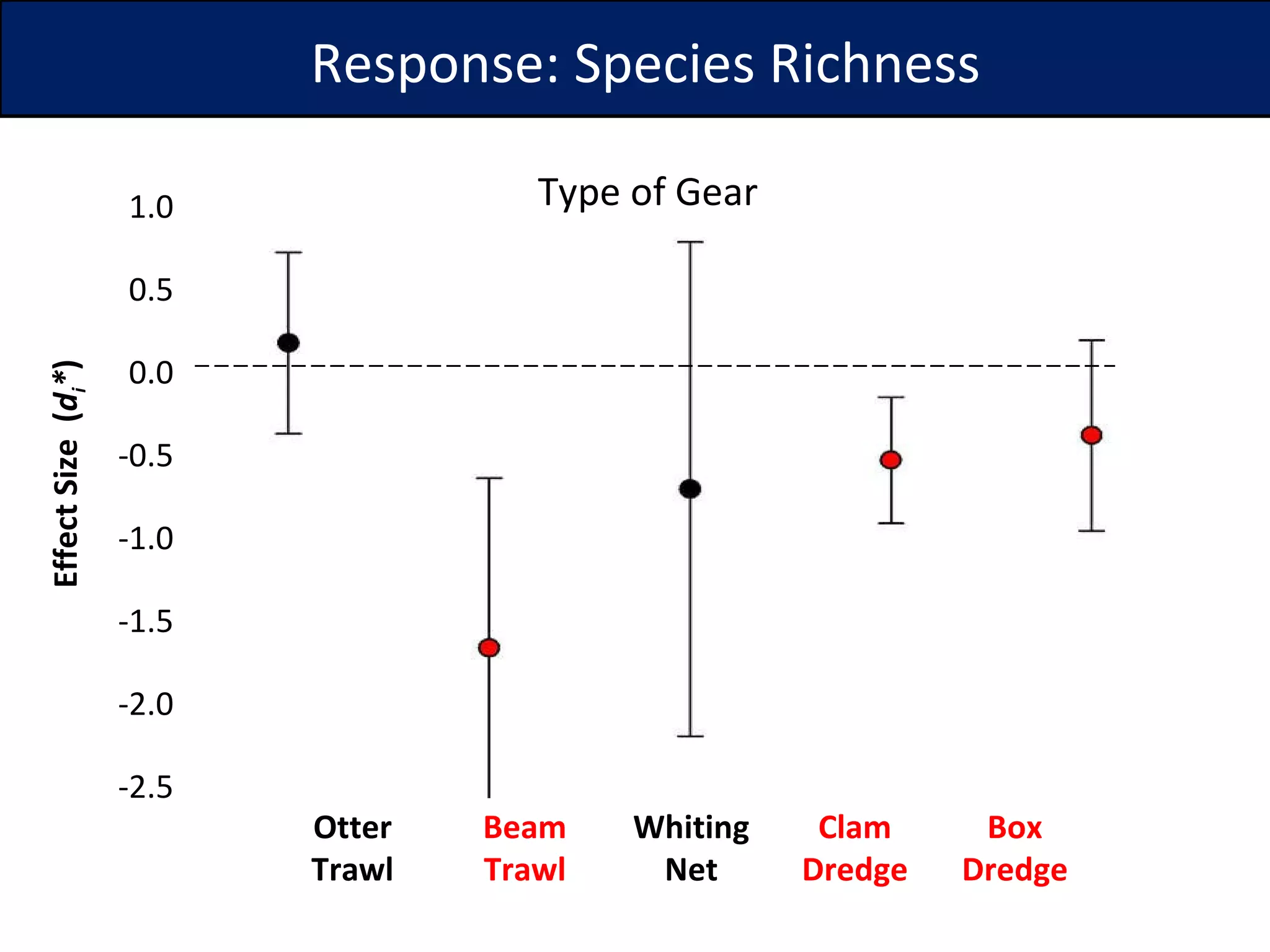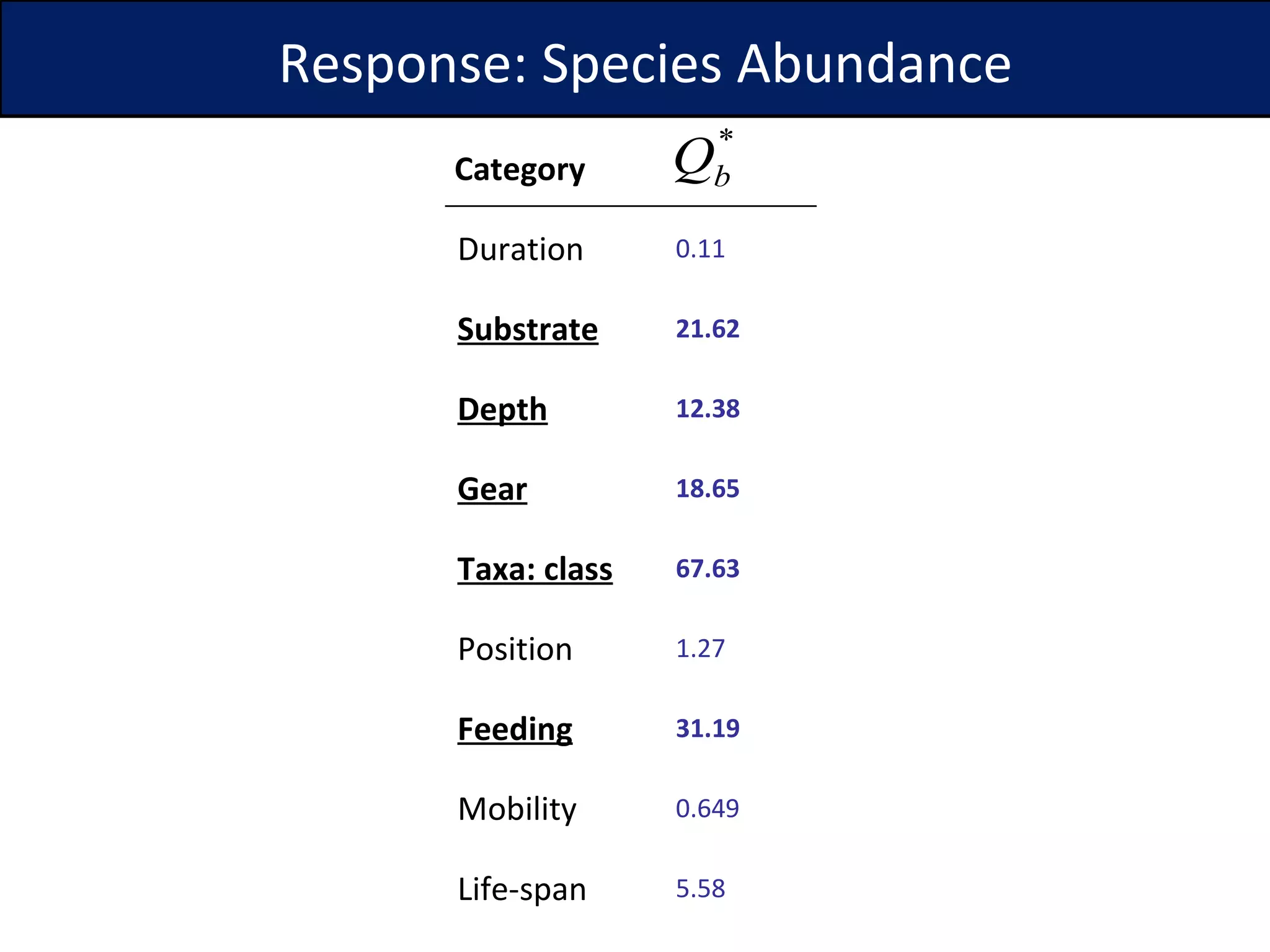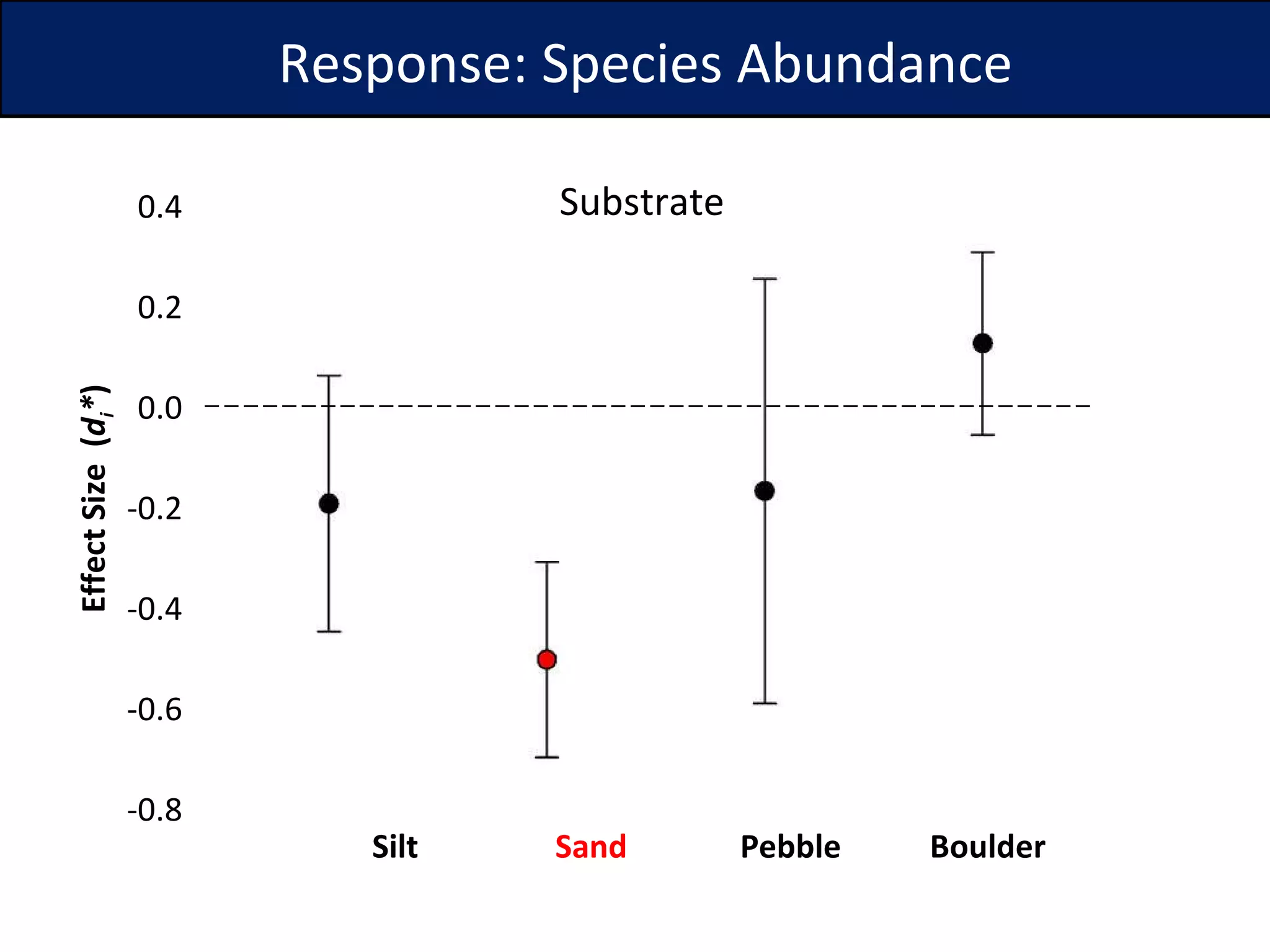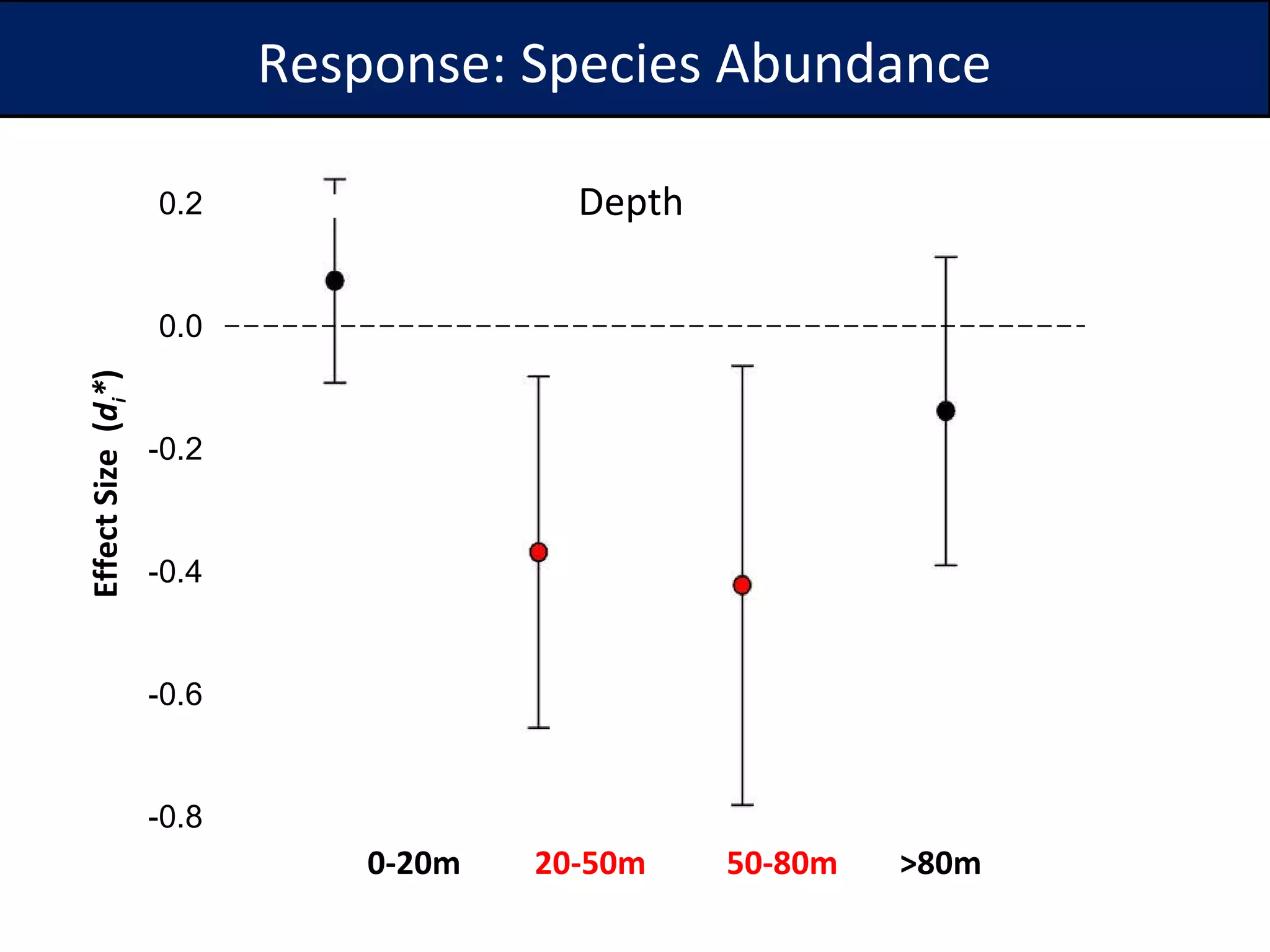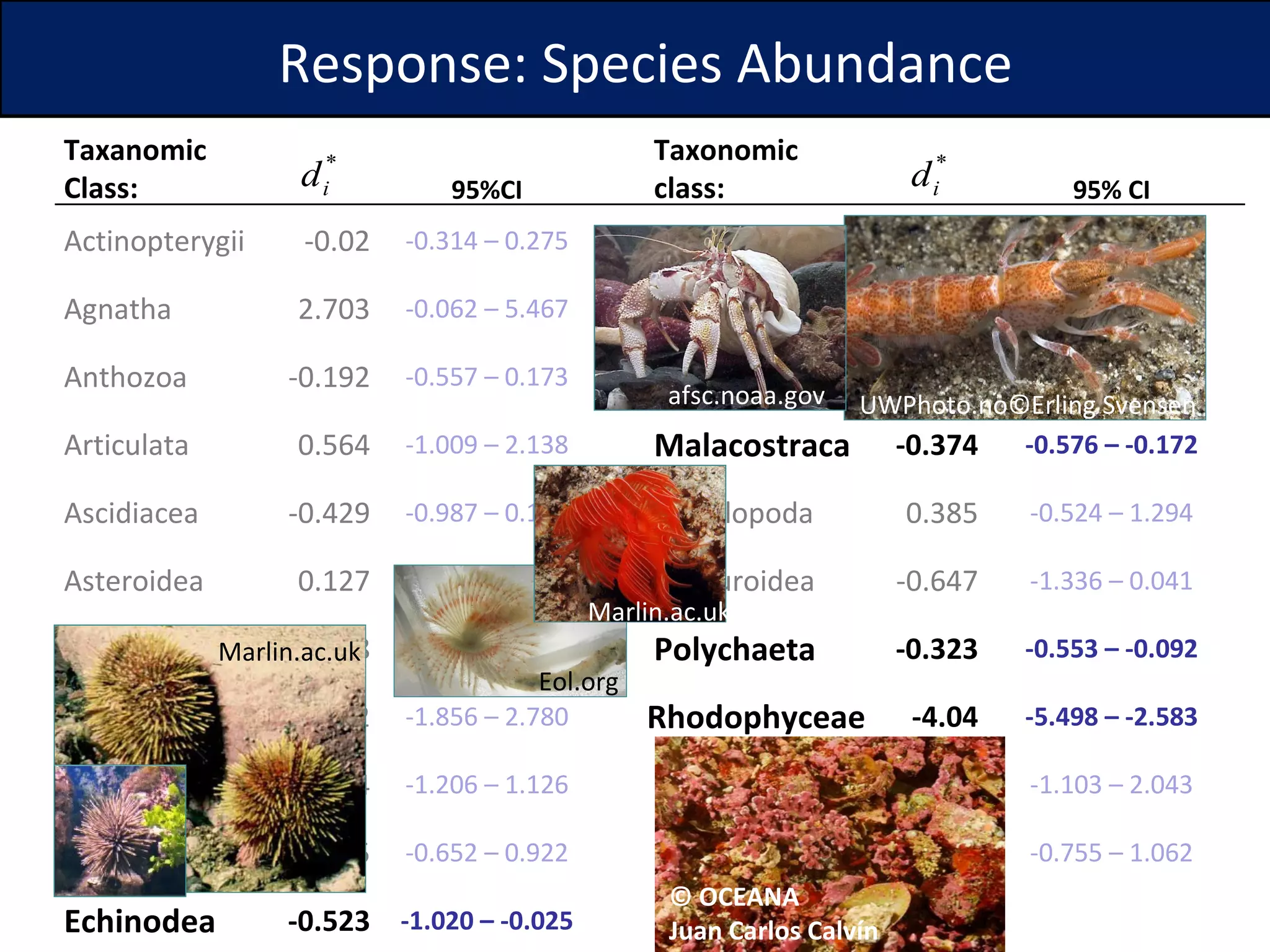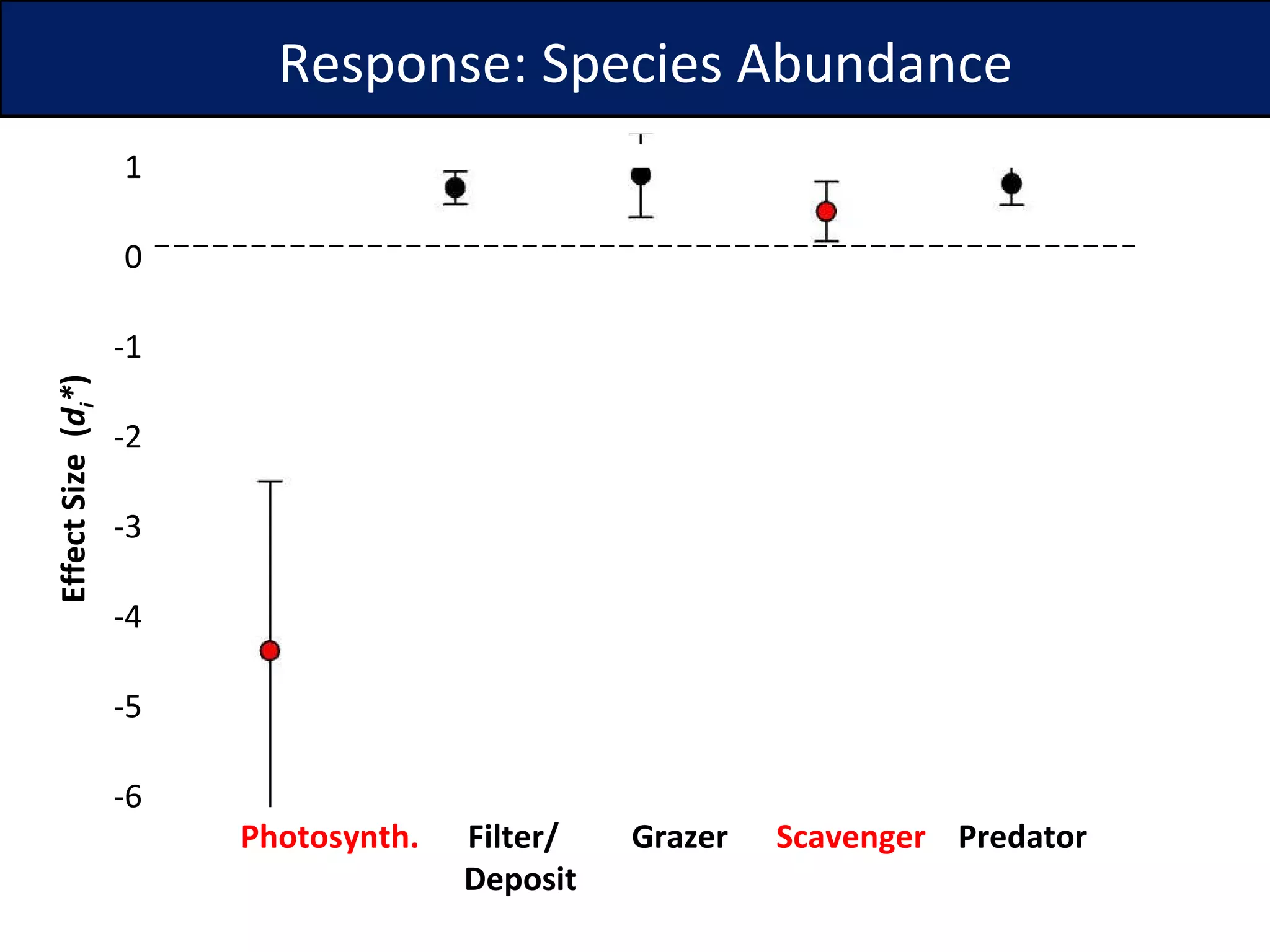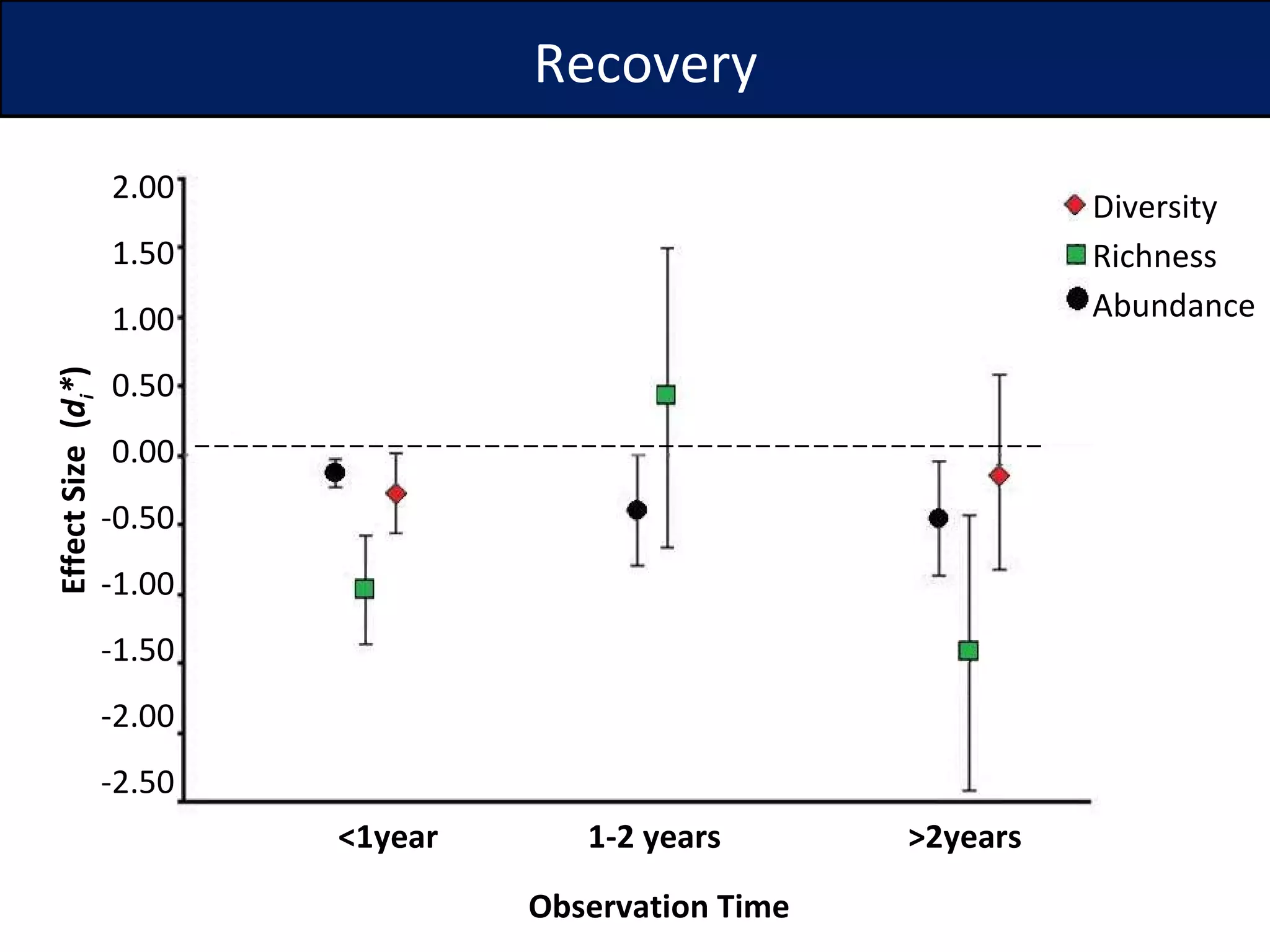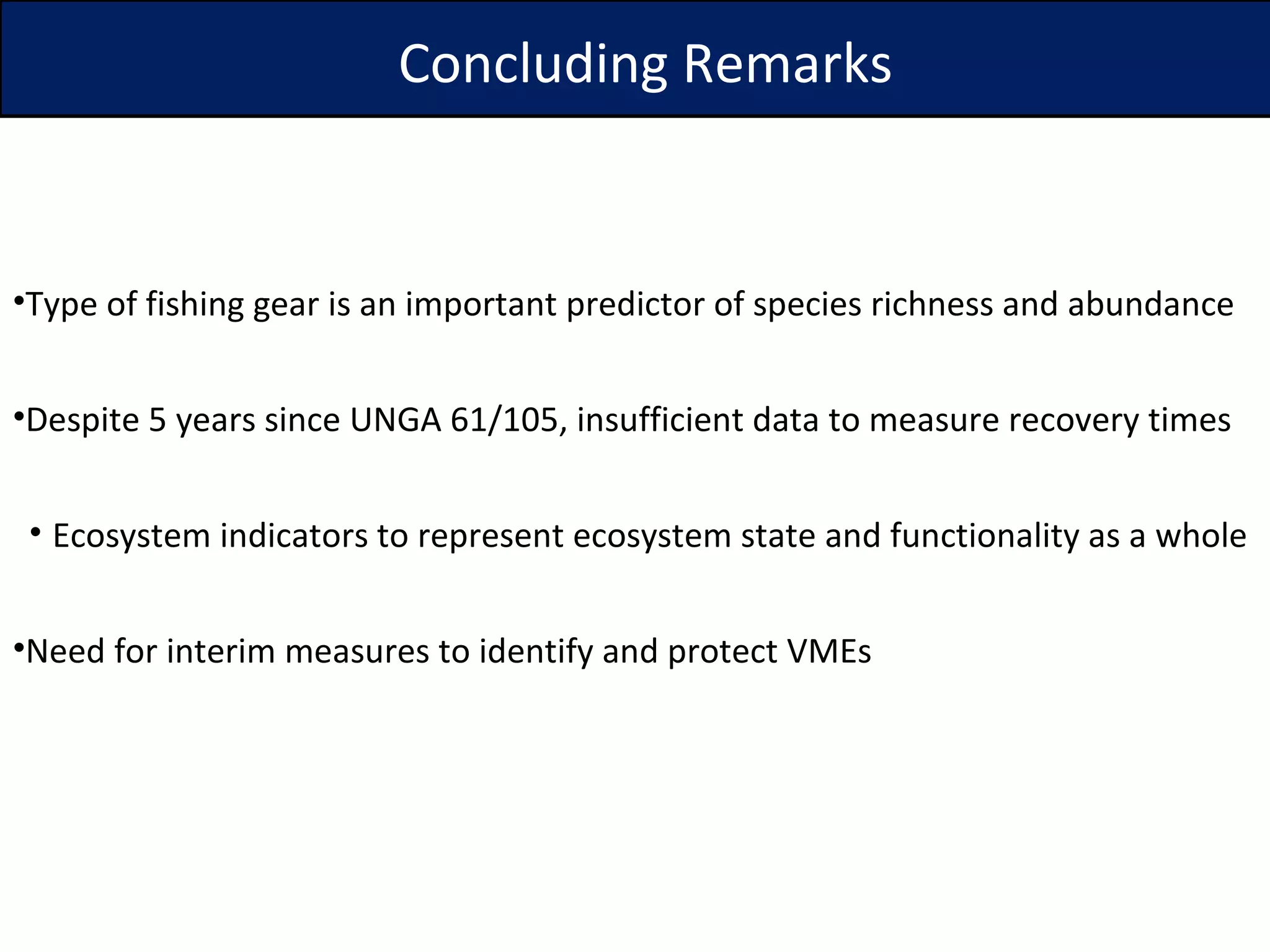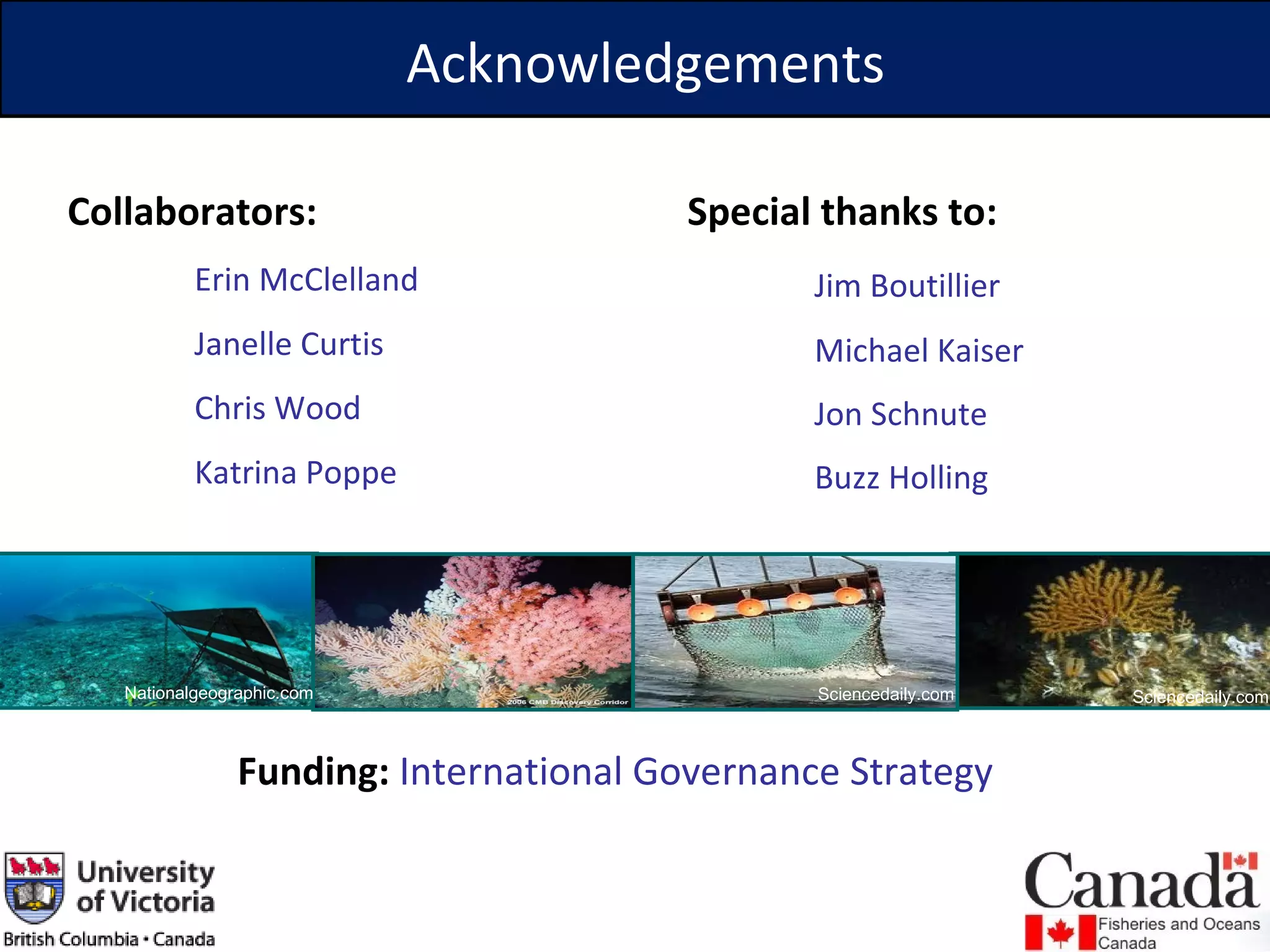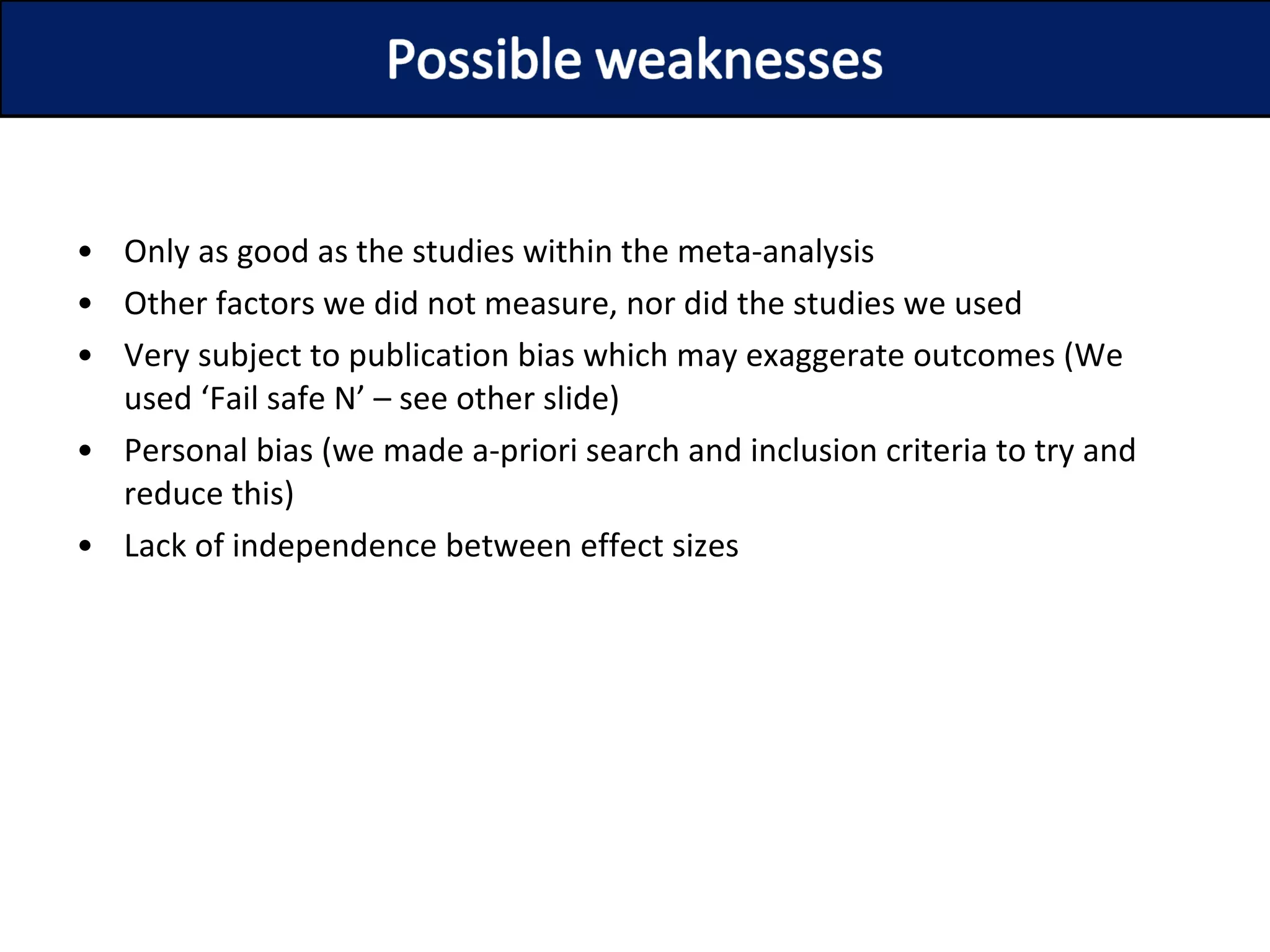This document summarizes a meta-analysis examining the response and recovery of benthic marine ecosystems following disturbance from fishing activities. The analysis found that gear type is an important predictor of impacts to species richness and abundance, with beam trawls and dredges tending to have stronger negative effects. Substrate type also influenced recovery, with slower recovery in sandy habitats. Duration of disturbance and depth were less reliable predictors. The analysis was limited by a lack of long-term data needed to fully assess recovery timelines. Improved monitoring is needed to identify vulnerable areas and inform management.
![Response and recovery potential of temperate benthic marine ecosystems following human disturbance Sciencedaily.com Nationalgeographic.com Sciencedaily.com Erin McClelland Janelle Curtis Chris Wood Devon Warawa [email_address] Katrina Poppe](https://image.slidesharecdn.com/warawa16315imcc2-13062832181356-phpapp02-110524193033-phpapp02/75/Response-and-Recovery-Potential-of-Benthic-Marine-Ecosystems-1-2048.jpg)
